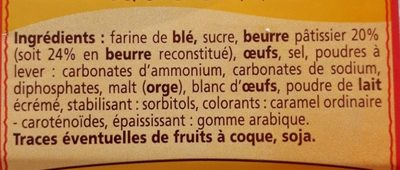Galettes bretonnes - Kergrist - 325 g
Ambiguous barcode: This product has a Restricted Circulation Number barcode for products within a company. This means that different producers and stores can use the same barcode for different products.
×
This product page is not complete. You can help to complete it by editing it and adding more data from the photos we have, or by taking more photos using the app for Android or iPhone/iPad. Thank you!
×
Barcode: 26006147
Quantity: 325 g
Brands: Kergrist
Categories: Snacks, Sweet snacks, Biscuits and cakes, Biscuits, Shortbread cookies, Shortbread cookies from Brittany
Countries where sold: France
Matching with your preferences
Environment
Carbon footprint
Packaging
Transportation
Report a problem
Data sources
Product added on by floriane-yuka
Last edit of product page on by tacinte.
Product page also edited by desan, fix-serving-size-bot, kiliweb, openfoodfacts-contributors.
If the data is incomplete or incorrect, you can complete or correct it by editing this page.








